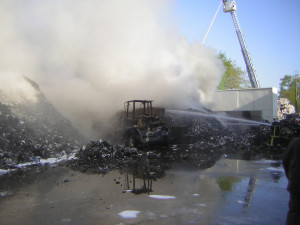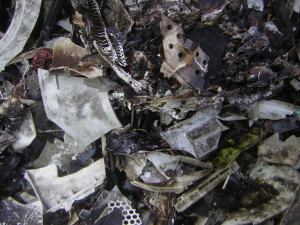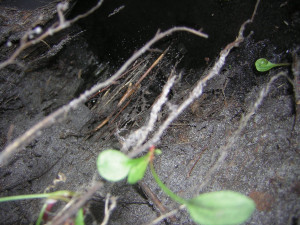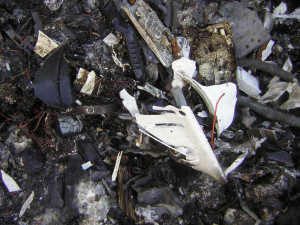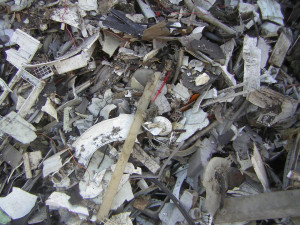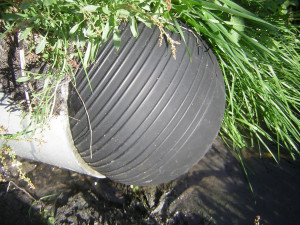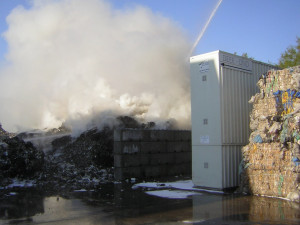At around 4:45○a.m., 400○m² of shredded washing machines (which included scrap metal, concrete, plastic, and wiring) caught fire at a waste sorting and treatment plant. The waste had been stored in two adjoining open-air bunkers surrounded by concrete blocks. The plant’s caretaker gave the alert upon returning from another site owned by the same operator. Firefighters contained the fire at around 11:00○p.m. They spread the waste piles with cranes, then used a water hose to continue cooling them. The plant’s employees monitored for flare-ups. Air-quality measurements were collected within a 500○m radius, but no significant toxicity was detected (neither HCN nor chlorine gas).
The fire burnt an estimated 700○m³ of waste in two bunkers and a loader. The firewater was directed to a dedicated pond connected to a hydrocarbon separator and then on to a pipe that drained into the ditch along the site. The hydrocarbon separator was not watertight and did not withstand the water pressure in the pond. Liquid has been seen flowing along the following discharge pipe, despite the pipeline plug used. The operator repaired the leak, cleaned the ditch, and checked that it had not been polluted.
Analysis of the causes and feedback
This was the plant’s second accident on the same waste pile in two months (ARIA 49606). After the first fire, the operator had planned to install a fire and intrusion detection system. However, it had not yet been installed when the current fire occurred.
The inspection authorities for classified facilities inspected the washing-machine shredding line and found many microwave ovens amongst the washing machines that were awaiting shredding. The operator told them that microwave ovens and washing machines are not shredded at the same time. However, shredded residues that did not come from a washing machine (charger, fuse, etc.) were found amongst the burnt shredded residues. Microwave ovens are built with a high-voltage fuse. This fuse can cause a fire when it comes into contact with metal or short-circuited.
The operator believed that the fire was due to a malicious act, but this theory did not tally with the facts — the fire had started inside the waste pile, not at its surface, and the waste burnt slowly, suggesting an ignition source deep within the pile.
Other fires had occurred at the site in 2014 and 2016 (ARIA 45707 and 47789).



